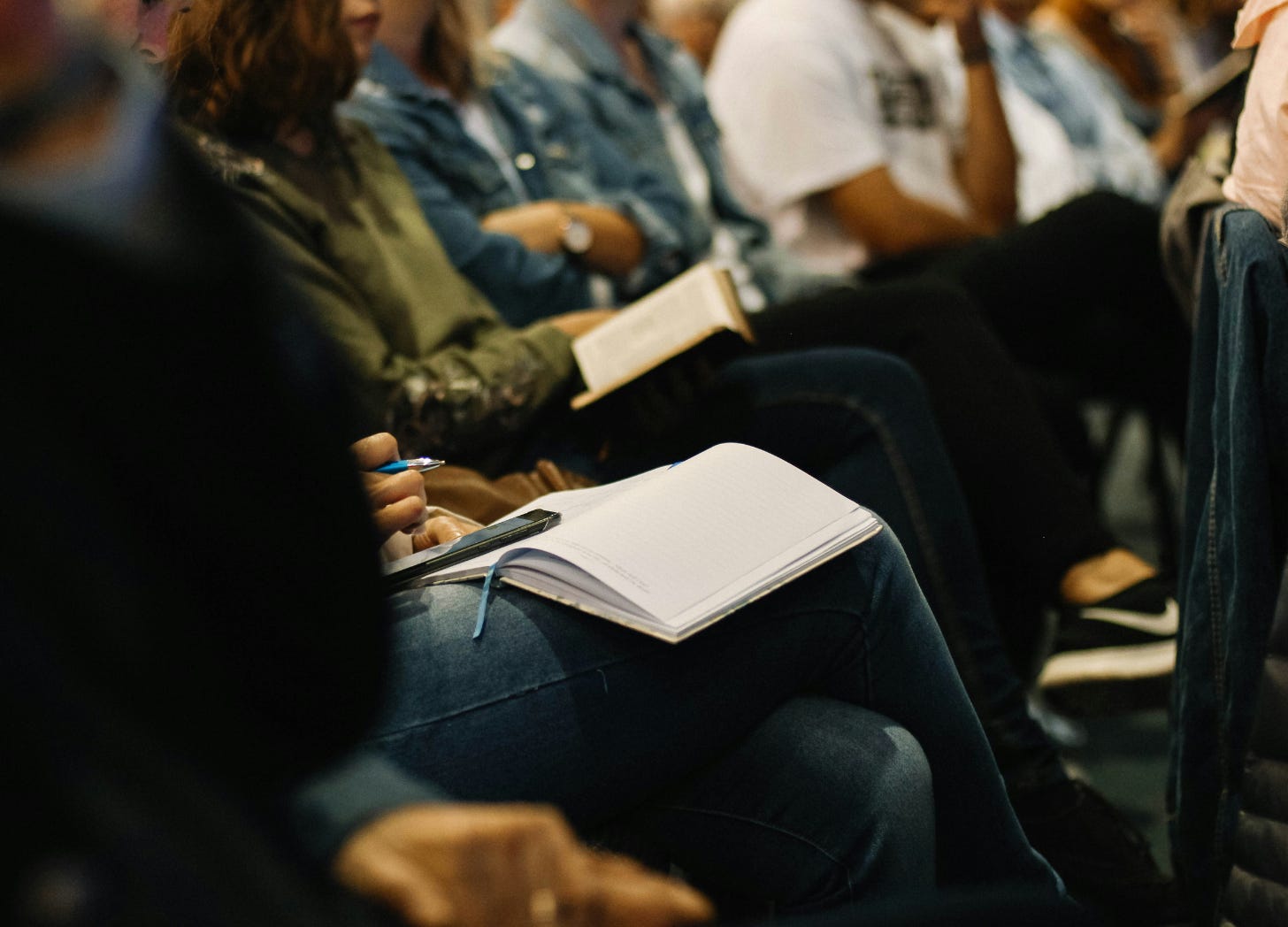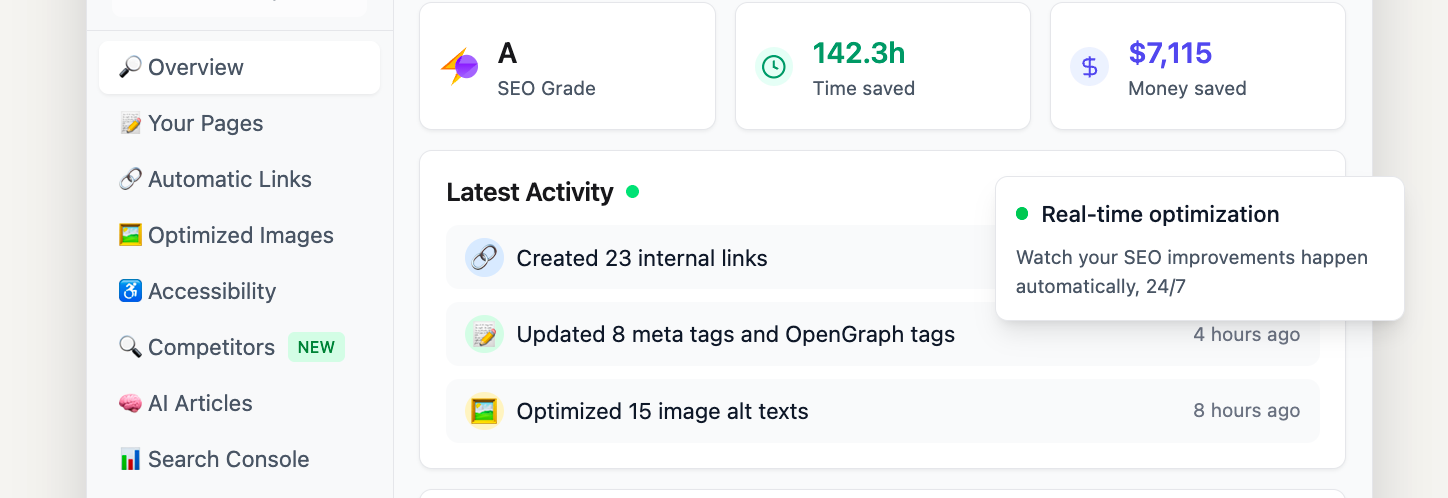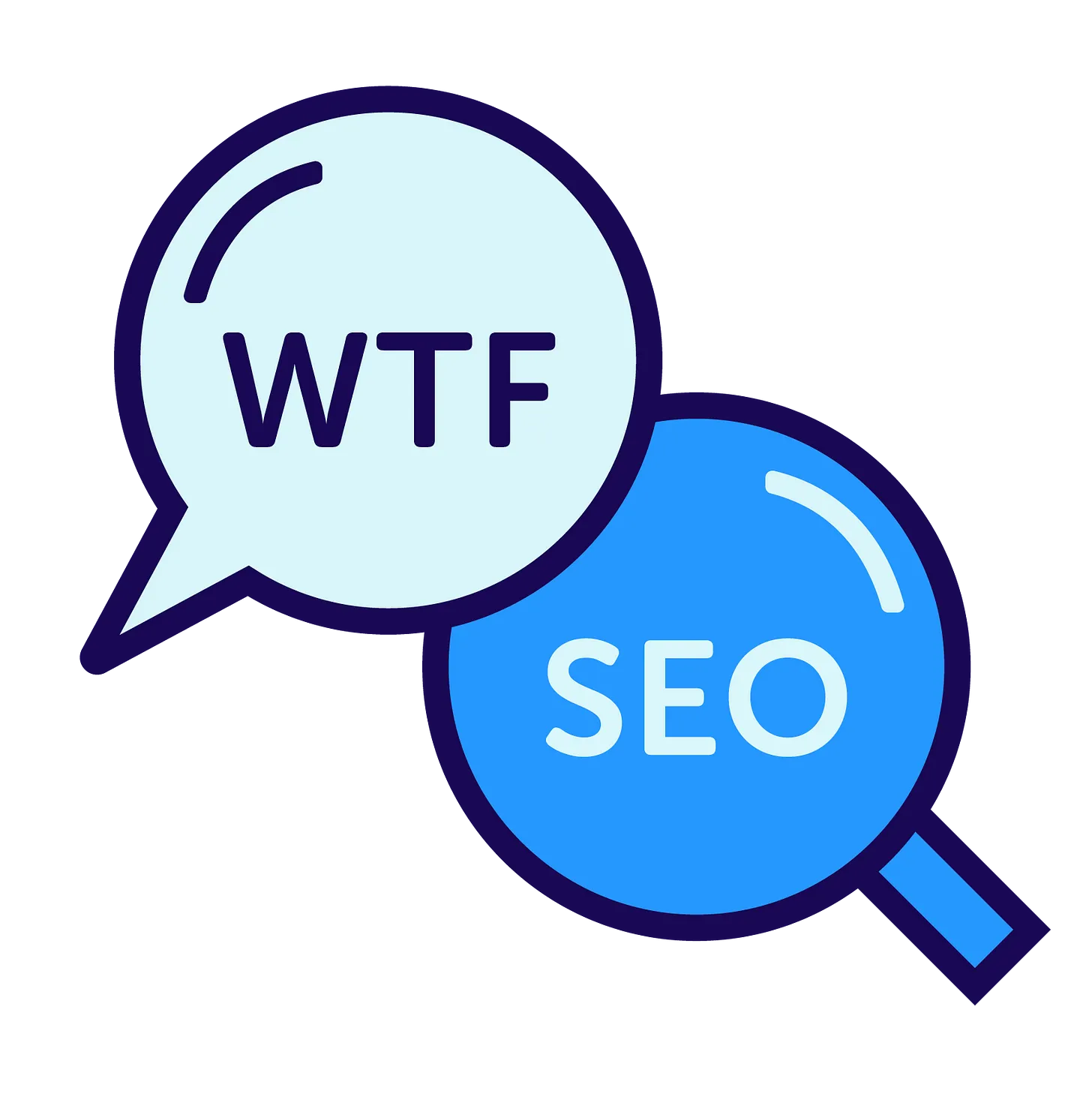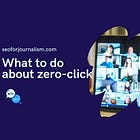What we learned at NESS 2025 (pt. 2)
We had such a great time at NESS 2025. Here’s part two of what we learned
#SPONSORED
The Smart SEO Shortcut
SEOJuice takes care of your internal linking and on-page optimizations automatically, so you can focus on creating great content. It quietly handles the technical stuff, tracks your competitors, and even suggests new topics/articles worth writing about. Less time fixing, more time growing.
Hello, and welcome back. Jessie here, back from a lovely week in London, England. Highlights included excellent book stores, spending too much on fabric at a haberdashery and meeting some Guardian colleagues IRL!
This week: What we learned at NESS – part two! Thanks again to our pals Barry Adams and John Shehata for putting together such a great conference (catch up on part one).
Happening soon: Save the date! Join us on November 19th for our next community call in partnership with Trisolute News Dashboard. More details coming soon.

Let’s get it.
THE HOW TO
A guide to surviving in the AI era
John Shehata began by talking about the challenges of the AI era: declining traffic and ranking opportunities, Google rewriting content into summaries (sometimes incorrectly), and overall revenue difficulties.
He shared tips for publishers to survive the AI-first era:
Reset expectations on traffic, which is likely to decline or prove volatile in coming years;
Focus on brand visibility and optimizing for entities closely related to your brand;
Create AI-resistant content. As AI tools increasingly summarize and synthesize information, focus on producing high-value content that generative AI can’t easily replicate. This includes original data, in-depth analysis, expert opinion, live coverage, and commentary that offer unique insights beyond what a summary can capture.
Track brand visibility to understand the topics and entities where LLMs consider you the expert.
Own your audience completely. Build your email list and pool of registered users — these are highly valuable channels for reaching people beyond mediated platforms.
Diversify revenue and traffic avenues outside of search to be less susceptible to change in Google’s algorithm and the search landscape.
John concluded by saying SEOs are very well equipped with all the skills and knowledge to survive and thrive in the AI era.
Understanding technical SEO in the age of AI
Christine Liang, senior director of technical SEO at the New York Times, and Barry Adams took on technical SEO, sharing insights for maximizing growth across all platforms.
Barry provided an overview of common technical SEO challenges – and their solutions – including:
Duplicate URLs: an indexable webpage should only have one URL.
Canonical tags used incorrectly: these tags don’t solve crawl waste.
Internal redirects: internal links on a site should never go through a redirect hop (because this wastes essential crawl budget).
Wasted crawl: Google crawls everything it can find including images, CSS, JavaScript and font files. This can be solved by offloading those page resources to a subdomain or CDN.
Slow pages: fast websites are crawled more often. Keeping page speed under <600ms is a realistic goal.
Client-side rendering: all the content and links you want Google to see should be in the HTML source code. Semantic HTML helps Google better understand your content.
Avoid overload structured data: schema is helpful, but it’s not necessary to be elaborate. Shorter snippets make it easy for Google to read.
Core Web Vitals: CWV has a big impact on user experience – which influences search ranking.
Christine outlined the evolution of AI’s role in search, from Google’s 2015 launch of RankBrain — Google’s first AI-driven ranking algorithm — to 2025, with AI Mode, AI Overviews, and AI-powered tools throughout the SERP.
The shift from bots to LLMs: Christine explained that technical SEO isn’t going anywhere in the AI era. It has been traditionally rooted in websites being discoverable and crawlable by robots – that’s not changing.
In a search landscape that includes these AI-powered tools, the answer to visibility in LLMs is to continue to do SEO well. The foundations haven’t changed.
Content needs to be indexed in order to be mentioned and cited in Al features and search engines. A strong technical and editorial foundation remains essential, Christine said.
How to earn a click
Maddie Shepherd, director of SEO for Paramount Global, spoke about the art and science of earning a click.
Why it matters: “It’s crucial to use both sides of your brain while trying to convince searchers to become readers or viewers on your site,” Maddie said.
Impressions boost visibility, but without clicks there’s no audience — and Google uses those user interactions to shape search rankings.
Sites need to make the most of any search visibility they earn. To earn the click, publishers need to:
Prioritize winnable keywords: optimize for and measure success against search terms that are up for grabs. Some newsy queries surface AI Overviews, while others still have traditional organic results (including Top Stories). Focus on keywords with the most (pixel) visibility.
Make a SERP promise: headlines should offer more than competitors. Writing “click-worthy” headlines encourage readers to scroll past the title and engage with the story more deeply. For example, a “Watch live” headline for video coverage of an event promises an additional asset (the video), compared to a text-only file.
Get timestamps in order: streamline all the signals on your page for timestamps so the correct time is displayed.
Optimize images for clicks: if there are assets (like a map) in the file, showcase that up in the image – it’s a reason your piece is distinct compared to others on the SERP.
Earn the live badge: Implement the correct schema. The live badge communicates recency and freshness to readers and Google – even if timestamps aren’t updating correctly.
Ask the SEOs: news SEO career panel
NESS featured an all-star panel featuring Rachel Heseltine of Paramount Skydance, Marshall Simmonds of Define Media Group and Carly Steven of the Daily Mail discussing news SEO careers. Here are some highlights from the session:
What’s the most important SEO to sharpen over the next few years?
Marshall said SEOs need to build business acumen, to better articulate the value of SEO to the organization’s bottom line. News SEOs have to be able to understand, interpret and communicate changes in order to bring people along as search changes.
Rachel underscored the value of collaboration, saying that being able to work with people in every part of the organization is essential to long-term success.
Carly talked about the importance of knowing your brand, its value and what makes it unique. The current state of search means if you’re just repeating what other sites are doing, you’re unlikely to succeed.
What should a new SEO hire focus on?
“Talk to people,” Carly said. It’s not an SEO skill, but being able to talk to any editor in the newsroom is essential to getting buy-in for SEO ideas and projects. “Earning the respect and trust of the newsroom is transformational,” she said.
What SEO best practices should be retired?
“Whatever does not have a monetary, business or traffic impact should be retired,” Marshall said. Don’t spend your limited resources on tasks that don’t have an established return on effort.
Carly said newsrooms fixate on the value of optimizing URLs for search despite its actual, limited impact on search performance. “It’s perplexing,” she said.
Using entity analysis for SEO
“I approach SEO from an entity point of view,” said Dixon Jones, the CEO of InLinks.
An entity is a concept or idea that is distinct. It has connections with other entities. Whereas a keyword is just that: a singular search term. Entities are more encompassing: for the entity “shoe” includes both keywords “trainers” and “running shoes” refer to the same thing. They should be prioritized over keywords.
Traditional SEO, which often focuses on keywords, is inadequate in the era of LLMs because traffic is no longer the singular goal – instead a strong brand and its associated entities is more important.
Keywords are not a suitable way to measure the output of LLMs – but entities are.
Topics are a subset of entities; they can be broken down to create AI-informed content using this process:
Identify entities: collect and cluster the entities for your publication’s website;
Expand on your existing footprint: find ideas that that are closely related to your site’s existing entities;
Do competitor analysis: research competitor entities and perform a gap analysis to uncover opportunities. Use this gap analysis when creating new content.
Be human: use the human touch in your output (instead of publishing entirely AI-written content).
AI Mode, agents and wearables
“We’re in for some big changes,” Marie Haynes said about the future of search. She outlined the myriad of ways Google is evolving or will change in the coming years.
AI Mode is the “bleeding edge” of search results. As Google CEO Sundar Pichai said in an interview, AI Mode is where Google will test new features; successful experiments will move over into the regular experience.
Google’s goal is not to be a search engine, but a personal assistant. That means agentic features and increased personalization will become more embedded in the core product offering.
Among other changes are wearables like Google glasses or robots/devices that will actually do stuff for people.
Marie concluded by providing tips about what to do about the changes: starting with learning how machine learning works, communicating with LLMs, creating people-first and helpful content.
The bottom line: NESS focused on ways publishers and SEOs can adapt to a rapidly changing, AI-driven search landscape by focusing on brand authority, original content, strong technical foundations and direct audience ownership. While AI reshapes search and discovery, success will come from human expertise, collaboration and a deep understanding of existing foundational SEO concepts.
#SPONSORED - The Classifieds
Get your company in front of more than 13,000 writers, editors and digital marketers working in news and publishing. Sponsor the WTF is SEO? newsletter!
RECOMMENDED READING
Google news and updates
🤖 Matt G. Southern for Search Engine Journal: Google Q3 report: AI mode, AI overviews lift total search usage
Trust in AI shopping is limited as shoppers verify on websites.
🤖 Barry Schwartz for Search Engine Roundtable: Google Search Console adds Query groups in the Insights tab. The tool groups similar search queries together for easier analysis.
Even more recommended reading
🏃 Trisolute News Dashboard: Who ran the News Boxes for the 2025 NYC Marathon?
🏅 Dmitry Shishkin on LinkedIn: It’s time to promote your Audience Engagement lead to Editor-in-Chief.
❌ Lily Ray on LinkedIn: Here’s another way you’re being lied to about Generative Engine Optimization.
🛍️ Rishi Lakhani: The AI traffic lie: Why ChatGPT e-commerce referrals are failing to live up to the hype.
⌨️ Ivan Mehta for TechCrunch: Reddit CEO says chatbots are not a traffic driver.
💲 Columbia Journalism Review: How AI browsers sneak past blockers and paywalls.
📹 Calum Marsh for the New York Times: Starring in videos is no longer a job just for the social media team.
🏠 Heiko Scherer for The Audiencers: The homepage isn’t dead, it just stopped being a page
What did you think of this week’s newsletter?
(Click to leave feedback.)
Catch up: Last week’s newsletter
Have something you’d like us to discuss? Send us a note on Twitter (Jessie or Shelby) or to our email: seoforjournalism@gmail.com.
Written by Jessie Willms and Shelby Blackley







